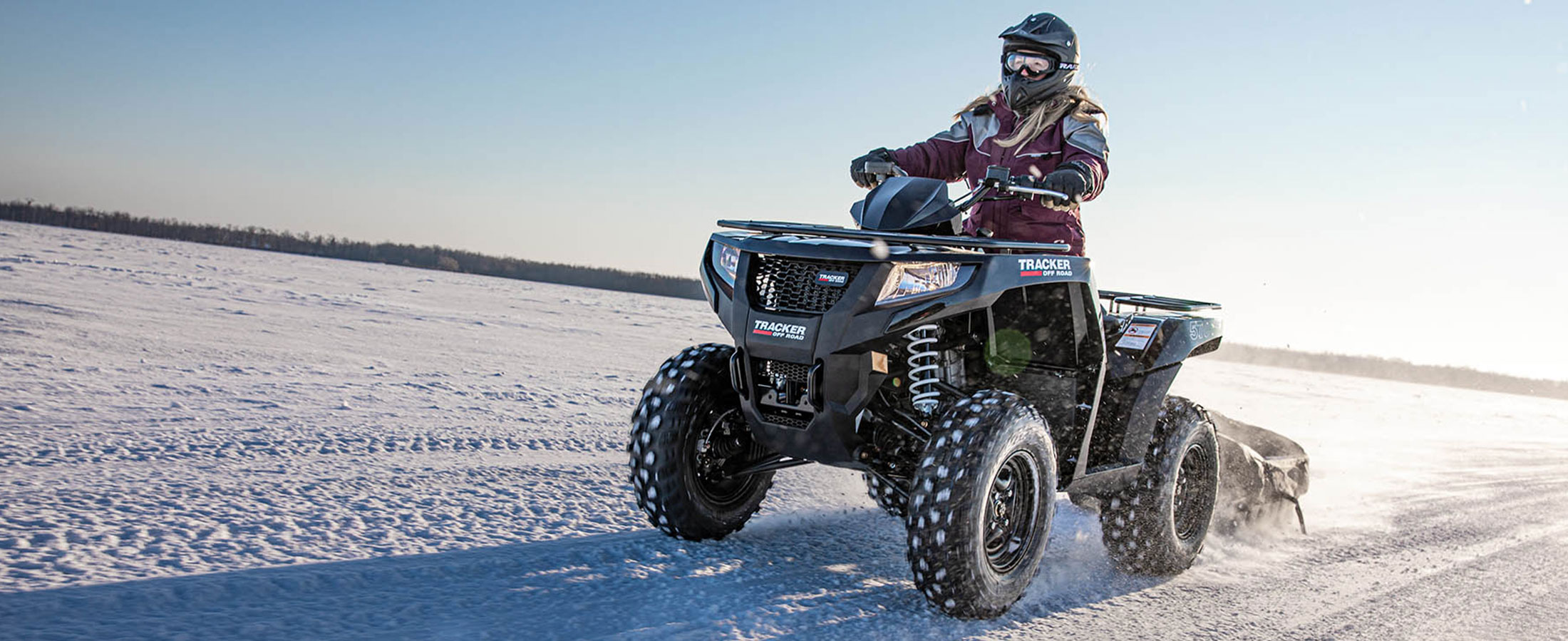Tracker Off Road Rider Safety
TRACKER Off Road ATV and Side by Side vehicles are built to connect you and those you love—family and friends—with the great outdoors, and getting out there safely is a high priority. ATV riders should know how to drive and operate their offroad vehicle, as well as select the right safety gear, so that each ride is safe and enjoyable for all participants. The right preparation and practice makes it easier for any level rider to handle different hazards they may encounter while riding off road. See our tips for rider safety practices and top considerations below.
![]()
Age & Size Appropriate
With the exception of the 90, off-road vehicles are meant for operators age 16 years and older with a valid driver's license. Only ride an ATV that is right for your age
Protective Gear & Equipment
For your safety, always wear a helmet, eye protection and protective clothing. Always wear a seat belt on side-by-sides.
Sober Operation
Avoid any substances that impair your awareness and motor skills while operating your ATV or SXS.
Safe Riding: Only Roads Less Traveled
Never ride on paved surfaces or public roads. Never carry a passenger on a single-rider ATV.
Safety Video

Training
Click the following links for more information regarding in-person and/or online courses visit your dealer or the following:
Recommended Gear
Helmet
- Meets or exceeds state safety standards
- Department of Transportation (DOT) or Snell Memorial Foundation approved (look for label)
- Full face or open w/mouth protection
CLothing
- Good gloves to help grip and absorb vibrations, that protect with outer padding over knuckles and fingers.
- Strong, over-the-ankle boots w/low heels
- Long-sleeved shirt/jersey & pants
Padding
- Off-highway pants w/knee pads
- Chest/shoulder protectors to shield debris and limbs
Eye protection that wraps around your face.
- Stamped with VESC8/V-8/z87.1 mark
- Note: Regular sunglasses do not provide proper protection
Pre-Ride Inspection
Check and maintain recommended tire pressure.
- Under-inflated tires can cause wheel damage. Over-inflated tires can damage tires. Both can result in poor steering and handling.
- Use a low-pressure gauge, not an automotive gauge.
Tires
- Check tires for leaks, cuts or gouges.
Wheels
- Ensure wheel axle nuts are tight and cotter pins are secured. Make sure wheel nuts are tight. Rock front and rear wheels to check for bad bearings or loose nuts.
brakes
- Check brakes for proper operation.
Throttle
- Make sure throttle works smoothly and correctly with the handlebars in any position. Check cables and controls aren’t damaged.
Foot Shifter
- Ensure the foot shifter is correctly attached and positioned.
Lights
- Test all lights.
oil
- Check oil before starting engine.
driveshaft and chassis
- Inspect driveshaft and chassis for loose parts.
Safety Gear
- Make sure your tool kit and safety gear is in order.
Aside from the pre-ride check, make sure you perform periodic maintenance as outlined in your owner manual.


